-
×
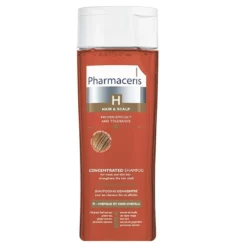 PHARMACERIS H-KERATINEUM Shampoo for Damaged Hair (250ml) - Imported from Poland
₨ 4,500
PHARMACERIS H-KERATINEUM Shampoo for Damaged Hair (250ml) - Imported from Poland
₨ 4,500 -
×
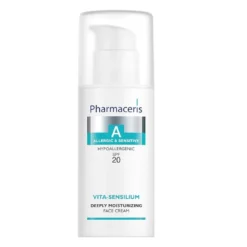 Revitalize Your Skin with PHARMACERIS A Vita-Sensilium Nourishing Cream (50ml) | For Sensitive Skin | derma.pk
₨ 5,625
Revitalize Your Skin with PHARMACERIS A Vita-Sensilium Nourishing Cream (50ml) | For Sensitive Skin | derma.pk
₨ 5,625 -
×
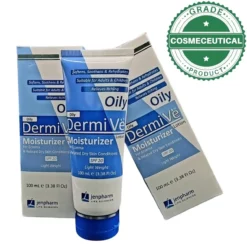 DERMIVE OILY MOISTURIZER LOTION (FOR ECZEMA AND RELATED DRY SKIN CONDITIONS SPF 20) 100ml
₨ 998
DERMIVE OILY MOISTURIZER LOTION (FOR ECZEMA AND RELATED DRY SKIN CONDITIONS SPF 20) 100ml
₨ 998 -
×
 PHARMACERIS T Puri-Sebotonique U20 95% Active Detoxifying Mousse 200ml - Deep Cleansing for Oily & Acne-Prone Skin (Imported from Poland)
₨ 3,250
PHARMACERIS T Puri-Sebotonique U20 95% Active Detoxifying Mousse 200ml - Deep Cleansing for Oily & Acne-Prone Skin (Imported from Poland)
₨ 3,250 -
×
 PHARMACERIS H STIMUPURIN Shampoo (250ml) - Imported from Poland
₨ 6,500
PHARMACERIS H STIMUPURIN Shampoo (250ml) - Imported from Poland
₨ 6,500 -
×
 DERMOFUTURE HAIR GROWTH MASK 300ml
₨ 2,800
DERMOFUTURE HAIR GROWTH MASK 300ml
₨ 2,800 -
×
 LAZUXE SPF 60+ SUNBLOCK 45ml ULTRA HIGH PROTECTION ENRICHED WITH VITAMINS
₨ 850
LAZUXE SPF 60+ SUNBLOCK 45ml ULTRA HIGH PROTECTION ENRICHED WITH VITAMINS
₨ 850 -
×
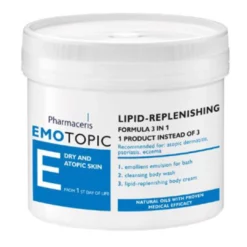 PHARMACERIS E Emotopic 3-in-1 Cleansing Gel (500ml) | For Eczema-Prone & Sensitive Skin | derma.pk
₨ 7,000
PHARMACERIS E Emotopic 3-in-1 Cleansing Gel (500ml) | For Eczema-Prone & Sensitive Skin | derma.pk
₨ 7,000 -
×
 Moisturizer for Dry Skin - DermiVe Oily Lotion SPF 20 for Eczema Relief
₨ 998
Moisturizer for Dry Skin - DermiVe Oily Lotion SPF 20 for Eczema Relief
₨ 998 -
×
 CUTE-E CREAM ADVANCE FORMULA FOR MELASMA & FRECKLES 30g
₨ 1,050
CUTE-E CREAM ADVANCE FORMULA FOR MELASMA & FRECKLES 30g
₨ 1,050 -
×
 DERMIVE OIL FREE MOISTURIZER LOTION WITH CERAMIDES AND HYALURONIC ACID SPF 20 BROAD SPECTRUM SUNSCREEN 100ml
₨ 998
DERMIVE OIL FREE MOISTURIZER LOTION WITH CERAMIDES AND HYALURONIC ACID SPF 20 BROAD SPECTRUM SUNSCREEN 100ml
₨ 998 -
×
 BIOXSINE PURE AND WHITNING BODY LOTION 200ml
₨ 4,617
BIOXSINE PURE AND WHITNING BODY LOTION 200ml
₨ 4,617 -
×
 HAEMOLOK CAPSULES (TRANEXAMIC ACID) 500 mg PACK OF 20 CAPSULES
₨ 580
HAEMOLOK CAPSULES (TRANEXAMIC ACID) 500 mg PACK OF 20 CAPSULES
₨ 580 -
×
 COSMED Cream for Skin Fairness | Q10 Retinol & Dark Spot Reducer
₨ 3,036
COSMED Cream for Skin Fairness | Q10 Retinol & Dark Spot Reducer
₨ 3,036 -
×
 U20 BB Cream 02 (60ml) - Your Secret to Flawless, Radiant Skin
₨ 2,875
U20 BB Cream 02 (60ml) - Your Secret to Flawless, Radiant Skin
₨ 2,875 -
×
 BEAUWELL Retinol Serum with 5% Hyaluronic Acid | Anti-Aging & Skin Rejuvenation
₨ 2,850
BEAUWELL Retinol Serum with 5% Hyaluronic Acid | Anti-Aging & Skin Rejuvenation
₨ 2,850 -
×
 Clinic Way 1-Day Cream (50ml) - Intense 24-Hour Skin Recovery
₨ 6,875
Clinic Way 1-Day Cream (50ml) - Intense 24-Hour Skin Recovery
₨ 6,875 -
×
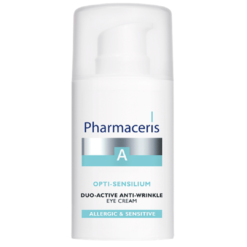 PHARMACERIS A Opti-Sensilium Duo-Active Anti-Wrinkle Eye Cream (15ml) | For Sensitive Skin | derma.pk
₨ 3,250
PHARMACERIS A Opti-Sensilium Duo-Active Anti-Wrinkle Eye Cream (15ml) | For Sensitive Skin | derma.pk
₨ 3,250 -
×
 Vaseline and Lotion Combo: Rosy Lips Lip Balm for Soft Hydrated Lips-derma.pk
₨ 715
Vaseline and Lotion Combo: Rosy Lips Lip Balm for Soft Hydrated Lips-derma.pk
₨ 715 -
×
 MAZ CLARITY ADVANCED ANTI ACNE SERUM 20ml
₨ 1,998
MAZ CLARITY ADVANCED ANTI ACNE SERUM 20ml
₨ 1,998
You may be interested in…
-
Add
 Lirene Power Of Plants Aloes Moisturizing Face Gel
Rated 5.00 out of 5(4) ₨ 2,000
Lirene Power Of Plants Aloes Moisturizing Face Gel
Rated 5.00 out of 5(4) ₨ 2,000 -
Add
 Sulfate Free Shampoo | Minevital Anti-Hair Loss Shampoo 300ml - Imported from Turkey
Rated 4.83 out of 5(6) ₨ 3,750
Sulfate Free Shampoo | Minevital Anti-Hair Loss Shampoo 300ml - Imported from Turkey
Rated 4.83 out of 5(6) ₨ 3,750 -
Add
 Silcio Ceramide Moisturizer - Lightweight Hydration-derma.pk
Rated 5.00 out of 5(5) ₨ 1,676
Silcio Ceramide Moisturizer - Lightweight Hydration-derma.pk
Rated 5.00 out of 5(5) ₨ 1,676 -
Add
 Bio One S.C Gel - Oily Skin Moisturizer for Sebum Control
Rated 4.75 out of 5(4) ₨ 1,250
Bio One S.C Gel - Oily Skin Moisturizer for Sebum Control
Rated 4.75 out of 5(4) ₨ 1,250 -
Add
 Aqua Color Line Long Wear Nail Polish 15ml - Shade 205
Rated 4.50 out of 5(10) ₨ 249
Aqua Color Line Long Wear Nail Polish 15ml - Shade 205
Rated 4.50 out of 5(10) ₨ 249







